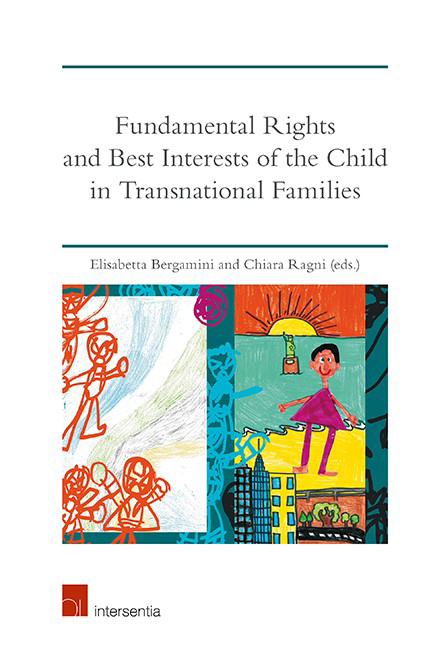Book contents
- Frontmatter
- Dedication
- Preface
- Acknowledgements
- Contents
- List of Cases
- List of Authors
- PART I THE IMPACT OF HUMAN RIGHTS AND OF THE BEST INTERESTS OF THE CHILD ON EU FREE MOVEMENT AND MIGRATION LAW
- Human Rights of Children in the EU Context: Impact on National Family Law
- Protecting EU Citizen Minors' Right to Identity in the Transnational Family Context
- The Best Interests Principle's Impact on Decisions Concerning Asylum-Seeking and Refugee Children
- Human Rights and the Best Interests of the Child in European Family Reunification Law
- Rainbow Families and EU Free Movement Law
- Kafala and Family Reunification of Third-Country Nationals
- Against a Girl's Will: Child Marriages, Immigration and the Directive on Family Reunification
- PART II THE BEST INTERESTS OF THE CHILD AS A CONCERN OF HUMAN RIGHTS AND EUROPEAN PRIVATE INTERNATIONAL LAW
- Index
- About the Editors
Human Rights of Children in the EU Context: Impact on National Family Law
from PART I - THE IMPACT OF HUMAN RIGHTS AND OF THE BEST INTERESTS OF THE CHILD ON EU FREE MOVEMENT AND MIGRATION LAW
Published online by Cambridge University Press: 12 November 2019
- Frontmatter
- Dedication
- Preface
- Acknowledgements
- Contents
- List of Cases
- List of Authors
- PART I THE IMPACT OF HUMAN RIGHTS AND OF THE BEST INTERESTS OF THE CHILD ON EU FREE MOVEMENT AND MIGRATION LAW
- Human Rights of Children in the EU Context: Impact on National Family Law
- Protecting EU Citizen Minors' Right to Identity in the Transnational Family Context
- The Best Interests Principle's Impact on Decisions Concerning Asylum-Seeking and Refugee Children
- Human Rights and the Best Interests of the Child in European Family Reunification Law
- Rainbow Families and EU Free Movement Law
- Kafala and Family Reunification of Third-Country Nationals
- Against a Girl's Will: Child Marriages, Immigration and the Directive on Family Reunification
- PART II THE BEST INTERESTS OF THE CHILD AS A CONCERN OF HUMAN RIGHTS AND EUROPEAN PRIVATE INTERNATIONAL LAW
- Index
- About the Editors
Summary
INTRODUCTION
We had to wait until 1989 for a specific general catalogue of children's rights to be approved at the supranational level (the Convention on the Rights of the Child (CRC)), which was drafted in New York in the framework of the United Nations). However, some general principles applicable to children had already been included in previously devised instruments concerning human rights. These include the Universal Declaration on Human Rights proclaimed by the UN General Assembly in 1948, the International Covenant on Civil and Political Rights of 1966 and the European Convention on Human Rights (ECHR) of 1950, all of which contain references at least to the need to protect family life.
The CRC differs from these previous instruments in that it considers the child as a subject and not only as an object of law. Through this ‘Copernican revolution’ children have become a focus of legal reasoning and are granted specific and autonomous rights that do not derive from their parents or, more generally, from being part of a ‘legitimate’ family. Such rights could also diverge from those of other family members. However, as will be illustrated in this chapter, the complex legal framework existing at the international level has yet to be fully implemented at the national level in most cases.
This chapter considers the idea that children's rights need to be protected as human rights, and that such protections are not only reserved for toddlers but are also valid for adolescents and young adults. Accordingly, this work analyses the main supranational instruments concerning children's fundamental rights, and assesses the global impact of the relevant principles on domestic family law in the EU Member States. Such an impact will be considered with particular regard to the role of the Court of Justice of the European Union (CJEU) in tandem with that of the European Court of Human Rights (ECtHR).
This chapter proceeds under the basic assumption that children's rights can be divided into two categories. The first category encompasses the more basic rights that are usually not at risk of violation in EU Member States (e.g. the right to respect for physical integrity and its violation in case of female genital mutilation).
- Type
- Chapter
- Information
- Publisher: IntersentiaPrint publication year: 2019



